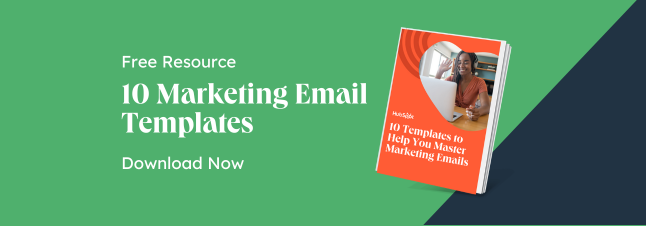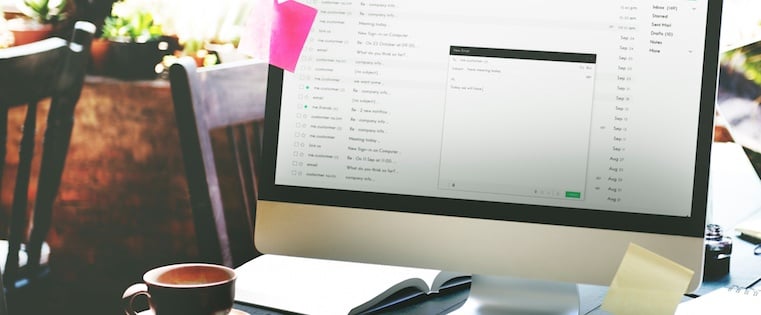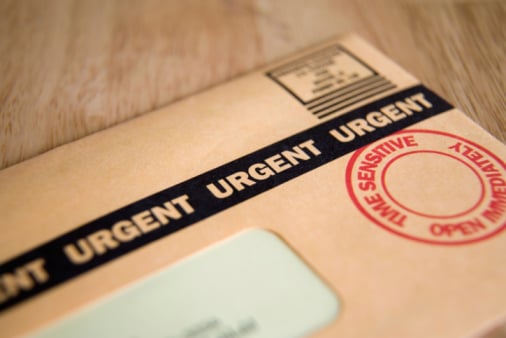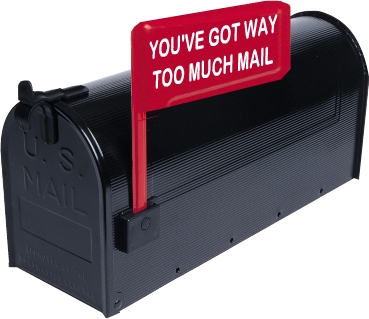Table of Contents
- When is the best time to send an email?
- Best Day To Send an Email
- Best Time To Send B2B Emails
- Best Time to Send B2C Emails
- Why Email Matters For Your Business
- How to Measure the Performance of Your Email Sends
The data reflects when most audiences begin their day and throughout the afternoon.

This data also aligns with my own experience. I usually check my email (personal and work) right as I start my day to catch up on anything I missed in the late afternoon and evening and see if there’s anything pressing I've received that will affect my upcoming work day or day in general.
If you're sending emails that include a sale or promotion, I’d recommend sending them when you know your audience trends to take their lunch breaks because they may be more likely to check their emails at this time.
Best Days To Send an Email
If you want something more specific when it comes to what time and day you should send an email, here's what you need to know:
Our survey asked marketers which day of the week their marketing emails get the most engagement. 27% of U.S. marketers said Tuesday, 19% said Monday, and 17% said Thursday. I’d caution against sending emails over the weekend, especially on Sundays.

If I cut that data by best days and best times, here’s what marketers say:
- The best time to send emails on Tuesday is 9 AM - 12 PM EST, then 12:01 PM - 3 PM EST. I’d stay away from sending your emails anytime after 6 PM EST.
- On Mondays, aim to send your emails between 6 AM and 9 AM EST, then 9 AM - 12 PM EST. You’ll get the least engagement between 6 PM and 9 PM EST
As marketers, we know the importance of using data to inform our decisions.
So, keeping your audience in mind when figuring out when to send your emails (instead of solely relying on the results above) is important. I’d recommend analyzing your historical engagement data to see when your emails generate the most interaction. Then, you can compare your unique insights with what other marketers say and decide the best days and times to appear in your subscribers' inboxes.
Pro Tip: The last thing you want is to panic at 8:56 AM because you need to send your email at 9 AM, but it’s not ready. I’m not saying that scenario ever happened to me…but I do know that keeping track of when to send your emails is challenging, especially if you’re balancing other tasks.
HubSpot’s Marketing Automation Software was a helpful sidekick when I sent out Service Blog Email Newsletters. I created emails in advance and set up a workflow that would automatically send them at the exact right time, every single time.
Get Started with HubSpot’s Marketing Automation Software
To ensure you're reaching your target audience, you'll want to segment your B2B audience down even further — perhaps by job function or seniority — to accommodate different behaviors and modes of working with your email sends. You may even find that other times work better for your list.
Continue experimenting and seeing what works best with your audience. One way to do this is by using an automation tool like Seventh Sense which will fine-tune your email sends using artificial intelligence.
Why Email Matters For Your Business
Our survey found that 85.4% of marketers leverage automation as part of their email marketing strategy. If you aren't leveraging automated email marketing, your competition probably is.
Automated email marketing allows you to improve sales conversions — maybe even by 14%. It's a way to send customers unique offers — such as product sales or newsletter updates — with information your reader can't get anywhere else.
Emails should contain content your customers want to see, allowing you to communicate with them instantly. Your emails should contain information your customers are interested in learning more about — such as discount offers, business updates, or product or service launches.
Pro tip: Having your emails pre-written and ready lets you take full advantage of automation. AI tools like HubSpot's Campaign Assistant and email writer can help you quickly write first drafts that you can further personalize with recipients' unique information.
If you're looking for a free email tool for creating your emails, HubSpot's marketing email tool combines the key features you need, and it's the best solution I can recommend. You can easily design your emails with its drag-and-drop editor, leverage the power of AI to create content, and set your scheduling preferences to send your emails at the right time.
-4.webp?width=700&height=279&name=The%20Best%20Time%20to%20Send%20an%20Email%20(Research-Backed)-4.webp)
How to Measure the Performance of Your Email Sends
There are a lot of metrics you can use to measure the success of your email marketing campaigns, but the one that matters most depends on the goal of your campaign.
For example, if I’m sending an email to advertise a new product, I’d be more interested in metrics that showed whether recipients were interested or not, like:
- Open rate, which could let me know if my subject line captured attention,
- And clickthrough rate, which would tell me if my email made people interested enough to click through to my website to learn more about the product.
A metric like replies wouldn’t tell me what I need to know about my audience’s feelings about my product.
Here is a breakdown of the most important email metrics:
Click-Through Rate
Click-through rate refers to the number of people who open a link or image in an email. This number will always be smaller than the total number of emails opened since some people will open your email but abandon it without engaging further.
It’s the most commonly tracked metric among the marketers we surveyed, and the three strategies they note are most effective in improving clickthrough rates are personalization (48.2%), crafting effective subject lines (36.5%), and providing value through marketing emails (38.2%).
Open Rate
Open rate is the percentage found from the number of subscribers who opened your email campaign. Emails that have great open rates have short, effective subject lines. Plus, they're optimized for previews and preheader text.
Click-to-Open Rate
Click-to-open rate helps you identify the content in your email that resonates the most with your recipients by comparing the number of people who opened your email to those who clicked any links. To get it, divide your CTR by your open rate and multiply the result by 100. For example, if your email receives 200 clicks and 120 opens, your click-to-open rate is 60%.
Over to You
Email marketing can be a tricky process . There are so many industries taking advantage of it in their own way and making an impact.
Your subscribers are already interested in your content. They appreciate what you are offering as a company, and as long as you're sending them emails that relate to that, you have a good chance of obtaining great metrics.
Editor's note: This post was originally published in November 2019 and has been updated for comprehensiveness.

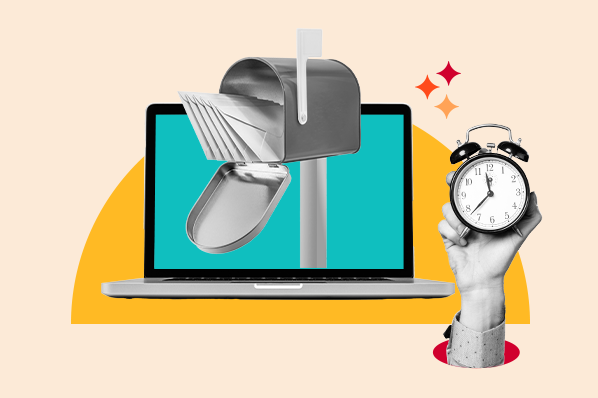
.png)

